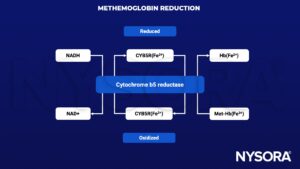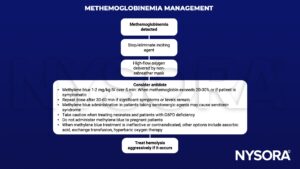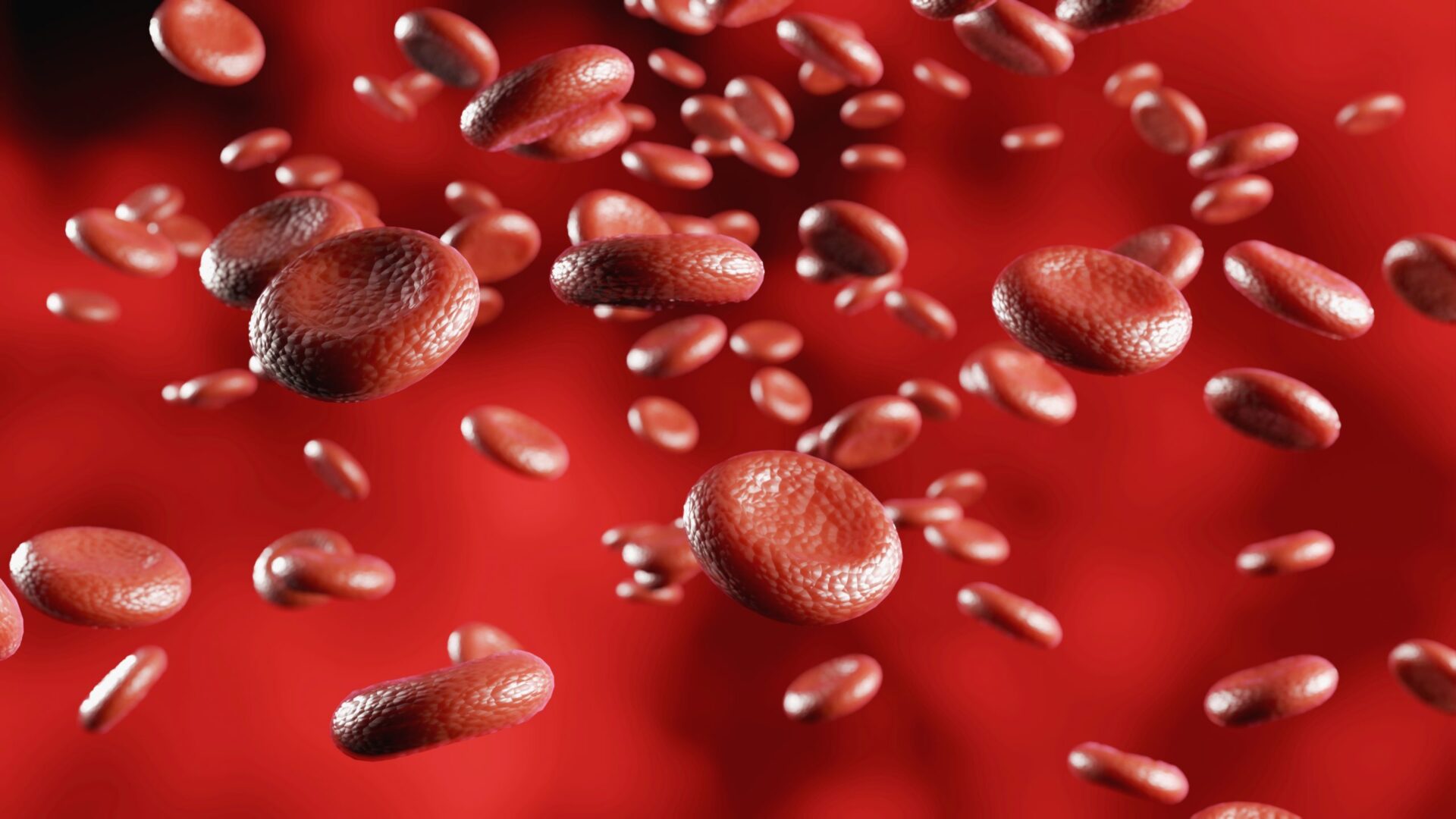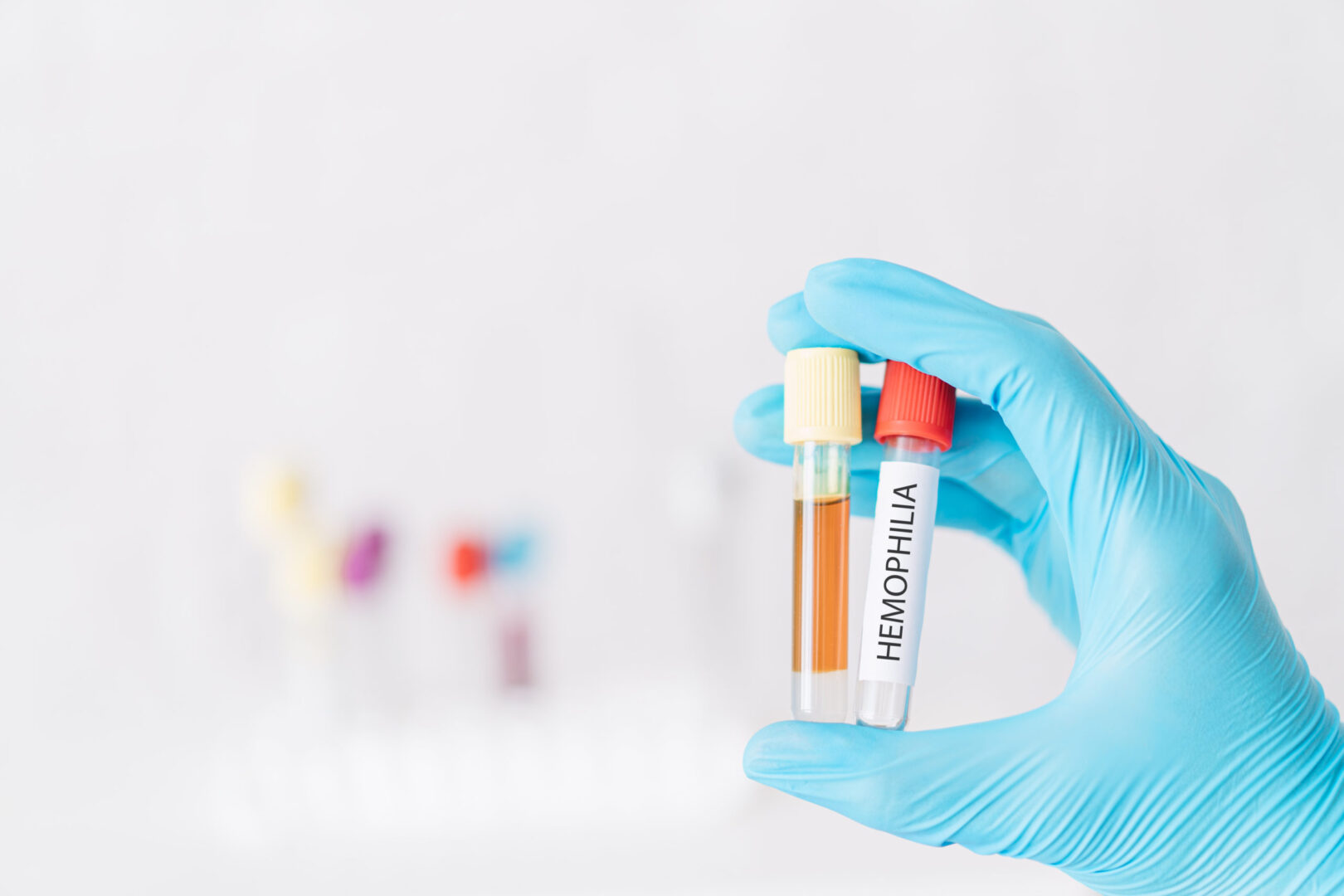Learning objectives
- Describe the definition and underlying mechanisms of methemoglobinemia
- Diagnose methemoglobinemia
- Manage patients with methemoglobinemia
Background
- Methemoglobin is the form of the hemoglobin molecule where the iron moiety is oxidized (Fe3+)
- It is formed in the presence of an oxidizing substrate and does not carry oxygen
- It shifts the oxygen-hemoglobin dissociation curve to the left, hindering the unloading of oxygen to the tissues
- These effects are proportional to the concentration of methemoglobin and reversible
- Normal methemoglobin levels: 1-2 %
- Methemoglobinemia refers to an abnormally high concentration of methemoglobin and results in functional anemia
- Methemoglobinemia can be a life-threatening condition
Etiology
- Congenital (rare)
- Autosomal recessive defects in cytochrome b5 reductase (CYB5R)
- Congenital methemoglobinemia type I: CYB5R defect only in erythrocytes
- Congenital methemoglobinemia type II: CYB5R defect in all cells
- Autosomal dominant mutations in hemoglobins M (hemoglobin M disease)
- Autosomal recessive defects in cytochrome b5 reductase (CYB5R)
- Acquired
- Exposure to oxidizing agents leading to methemoglobin production that exceeds the body’s reduction capacity
- Oxidizing agents:
- Direct
- Benzocaine
- Prilocaine
- Lidocaine
- Tetracaine
- Indirect
- Nitrates, nitrites
- Metabolic activation
- Aniline
- Dapsone
- Direct
Pathophysiology
Reduction of methemoglobin by cytochrome b5 reductase:

- Hemoglobin M disease:
- Mutation in globin protein allows for stabilization of iron in the ferric state (Fe3+)
- Most patients have methemoglobin levels between 15-30% and remain asymptomatic
- Congenital methemoglobinemia: Defect in CYB5R function raising methemoglobin levels
- Acquired methemoglobinemia: CYB5R is overwhelmed by oxidative stress resulting in raised methemoglobin levels
Diagnosis
- Pulse oximetry measurements of oxygen saturation (SpO2): Refractory hypoxemia
- Refractory hypoxemia is usually not detected using blood gas analysis using the partial oxygen pressure (SaO2)
- Saturation gap: Difference between depressed SpO2 measurement and falsely normal SaO2 calculation
- A saturation gap >5% indicates the presence of abnormal forms of hemoglobin
Management

Suggested reading
- Ludlow JT, Wilkerson RG, Nappe TM. Methemoglobinemia. [Updated 2022 Aug 29]. In: StatPearls [Internet]. Treasure Island (FL): StatPearls Publishing; 2022 Jan-. Available from: https://www.ncbi.nlm.nih.gov/books/NBK537317/
- Guay J. Methemoglobinemia related to local anesthetics: a summary of 242 episodes. Anesth Analg. 2009;108(3):837-845.
We would love to hear from you. If you should detect any errors, email us customerservice@nysora.com







